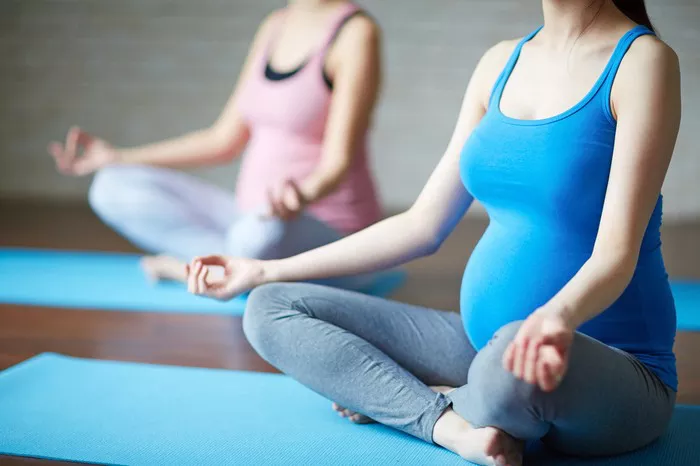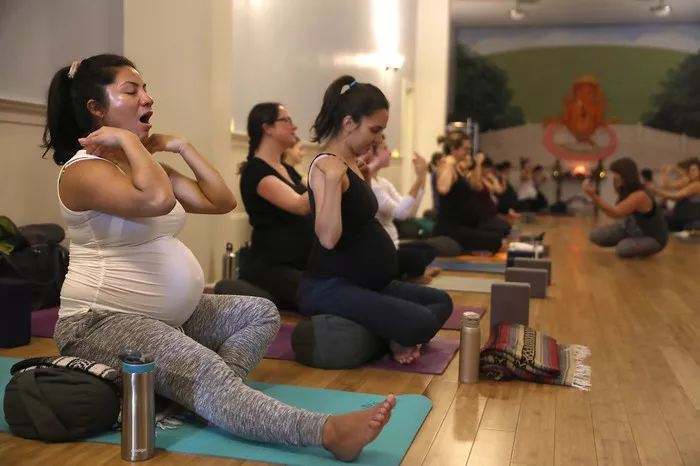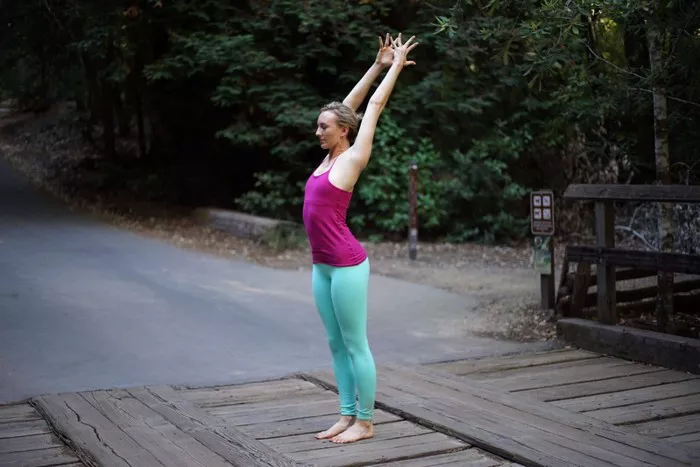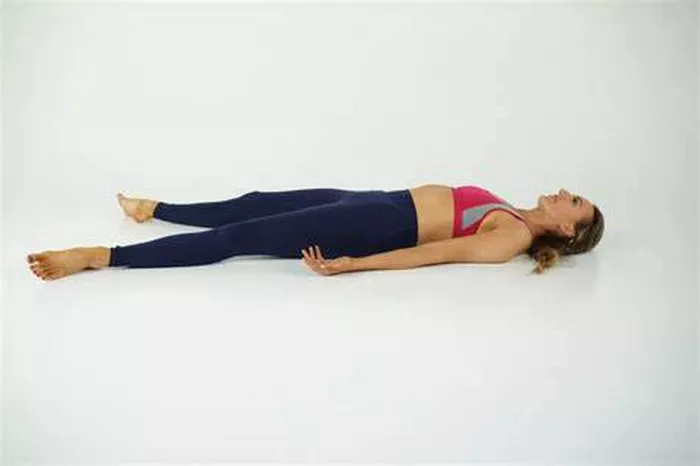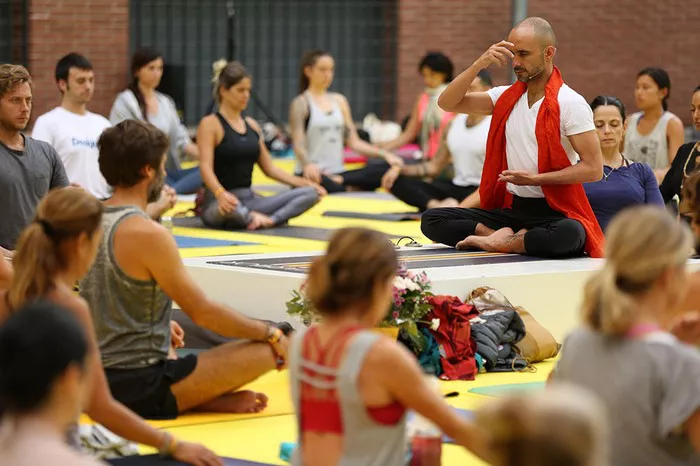Yoga, as a holistic practice, incorporates physical postures, breathing techniques, and meditation to promote overall well-being. Among the vast array of poses within yoga, each one serves specific functions, contributing to physical, mental, and emotional health. One such pose is the Reclined Bound Angle Pose (Supta Baddha Konasana), a variation of the Bound Angle Pose (Baddha Konasana) that is performed while lying on your back. This gentle yet deeply effective posture offers numerous benefits to the body and mind. In this article, we will explore the various advantages of Reclined Bound Angle Pose, covering its physical benefits, mental effects, and its suitability for different practitioners.
1. Understanding Reclined Bound Angle Pose (Supta Baddha Konasana)
The Reclined Bound Angle Pose is an accessible yet powerful restorative posture in yoga. To practice this pose, you begin by sitting on the floor with your spine upright. Your feet are brought together, and your knees are allowed to fall out to the sides. In the reclined version, you slowly lower your back onto the mat, keeping the soles of your feet together and the knees dropping toward the floor.
This variation of the Bound Angle Pose is a supine version, meaning you are lying on your back, which helps to reduce the strain often felt in the hips and groin in the seated version. It is a passive pose that encourages deep relaxation, stretching, and opening in the lower body while promoting an overall sense of calm and tranquility.
2. The Physical Benefits of Reclined Bound Angle Pose
Opening the Hips
One of the most significant benefits of the Reclined Bound Angle Pose is its ability to open the hips. The positioning of the legs—feet together and knees falling out to the sides—creates a stretch in the groin area and inner thighs. This gentle opening of the hips can help alleviate stiffness and discomfort, particularly for individuals who spend much of their day sitting or who experience tightness in the hip joints.
In particular, this pose targets the adductors (the muscles of the inner thighs), the hip flexors, and the groin. Regular practice can increase the flexibility and mobility of these areas, making it beneficial for people with limited hip flexibility or those who experience tightness due to a sedentary lifestyle.
Stretching the Inner Thighs
The Reclined Bound Angle Pose is a powerful stretch for the inner thighs, or adductors, which are often neglected in everyday movement. By allowing the knees to fall open towards the floor, this posture helps lengthen and stretch these muscles, releasing built-up tension. For those who engage in physical activities that involve a lot of running, cycling, or even standing, this stretch can significantly relieve tightness in the inner thighs and improve overall leg flexibility.
In addition to the inner thighs, the pose also targets the hamstrings and the lower back, enhancing flexibility in these areas as well. The gentle, passive nature of the pose makes it an ideal choice for people seeking a deep stretch without overstretching or risking injury.
Improving Posture and Spinal Alignment
While lying on your back in the Reclined Bound Angle Pose, the spine is naturally aligned with the floor, promoting a healthy posture. This position helps counteract the effects of slouching or poor posture that can develop from sitting for long periods or hunching over electronic devices. By gently stretching the lower back, hips, and legs, this pose helps to realign the spine and encourage an open chest, allowing for improved posture over time.
Moreover, the supported nature of the posture encourages relaxation in the muscles surrounding the spine. This can help alleviate chronic tension in the back and neck, which is especially helpful for those who experience discomfort due to stress, improper alignment, or desk work.
Relieving Tension and Stress in the Lower Back
Many individuals struggle with lower back pain, which can result from various factors such as muscle imbalances, poor posture, or prolonged sitting. The Reclined Bound Angle Pose helps to alleviate this discomfort by gently stretching the lower back and hip muscles, which are often tight and contribute to lower back pain.
In addition, the pose offers an opportunity for relaxation and mindfulness. By focusing on your breath and allowing your body to sink into the mat, you can help reduce muscle tension in the lower back and promote a sense of ease and comfort. This makes the pose particularly useful for those who suffer from tension-related back pain or who wish to reduce overall physical stress.
Stimulating Circulation and Relieving Swelling
The position of the legs in the Reclined Bound Angle Pose—feet together with knees out to the sides—encourages healthy blood flow to the lower body. This posture can stimulate circulation, particularly in the pelvis, legs, and feet, which helps to nourish the tissues and promote the removal of toxins. As a result, this can be an effective remedy for swelling or discomfort in the lower extremities, particularly for people who experience fluid retention due to prolonged sitting or standing.
In addition to improved circulation, the gentle nature of the pose promotes relaxation in the body, which can contribute to a reduction in inflammation or discomfort in areas such as the hips and legs.
3. The Mental and Emotional Benefits of Reclined Bound Angle Pose
Yoga is not only about physical benefits; it also provides profound mental and emotional advantages. The Reclined Bound Angle Pose, with its calming effect, offers numerous benefits for the mind and emotional well-being.
Reducing Stress and Anxiety
One of the most significant mental benefits of the Reclined Bound Angle Pose is its ability to promote relaxation and reduce stress and anxiety. The gentle, passive nature of the posture invites deep breathing and mindfulness, which activates the parasympathetic nervous system—the body’s “rest and digest” response. This helps to counteract the effects of the sympathetic nervous system, which is responsible for the body’s stress response.
By encouraging deep, steady breathing, the pose promotes a feeling of safety and relaxation. The slow, deliberate process of letting the body rest in the pose allows you to release accumulated tension, leading to a decrease in stress and anxiety levels. As a result, it is a beneficial practice for those experiencing mental fatigue, high stress, or emotional unrest.
Promoting Mindfulness and Present-Moment Awareness
The Reclined Bound Angle Pose can serve as an excellent opportunity for mindfulness and meditation. By focusing on your breath and observing the sensations in your body, you bring your attention to the present moment. This kind of mindful practice helps to cultivate awareness, not only of your body but also of your mental and emotional states.
Practicing mindfulness while in this pose can help you become more aware of any lingering tension or discomfort in the body, allowing you to consciously release it. Over time, this awareness can extend beyond the mat and into your daily life, improving your ability to remain calm and present in various situations.
Balancing the Sacral Chakra
In yogic philosophy, the Sacral Chakra (Svadhisthana) is associated with creativity, emotional balance, and sensuality. Located in the lower abdomen, near the hips, this energy center is thought to be activated and balanced through hip-opening postures like the Reclined Bound Angle Pose.
By practicing this pose, you can promote the flow of energy through the Sacral Chakra, which may help release emotional blockages and facilitate a greater sense of emotional well-being. This can lead to enhanced creativity, a better connection to your feelings, and a greater sense of overall balance and harmony.
4. Accessibility of Reclined Bound Angle Pose
The Reclined Bound Angle Pose is a highly accessible pose suitable for a wide range of individuals, including beginners, seniors, and those with physical limitations. Since it is a supine position, the pose does not require a high level of strength or balance, making it an excellent option for those who might struggle with other more dynamic postures.
Furthermore, the pose can be modified to suit individual needs. For example, if your knees do not comfortably reach the floor, you can place cushions or blocks under the thighs for support. Similarly, if you find it difficult to bring your feet together, you can keep a slight distance between them. These adjustments allow for greater comfort while still reaping the benefits of the pose.
The soothing nature of this pose also makes it ideal for individuals recovering from injury or surgery, as it can help to stretch and release tension in the body without exerting excessive strain on the joints.
5. How to Practice Reclined Bound Angle Pose
While the Reclined Bound Angle Pose may seem straightforward, practicing it with intention and mindfulness will maximize its benefits.
Step-by-Step Instructions:
Start in a seated position: Begin by sitting on the floor with your legs extended out in front of you. Keep your spine straight and your shoulders relaxed.
Bring your feet together: Bend your knees and bring the soles of your feet together. Allow your knees to naturally fall out to the sides. The closer your feet are to your pelvis, the deeper the stretch in the inner thighs.
Slowly lower your back: With a straight spine, slowly lower your back to the mat, keeping the soles of your feet together. Allow your knees to fall outward toward the floor.
Relax your arms: Once your back is resting comfortably on the floor, extend your arms along your sides with your palms facing up. Alternatively, you can place your hands on your abdomen or rest them on blocks or cushions for added support.
Breathe deeply: Focus on your breath as you settle into the pose. Inhale deeply through your nose, expanding your belly, and exhale slowly, letting go of any tension. Stay in the pose for anywhere from 5 to 15 minutes, allowing your body to relax completely.
Exit the pose: When you’re ready to exit the pose, slowly draw your knees together and roll onto your side before gently pressing yourself back up to a seated position.
Conclusion
The Reclined Bound Angle Pose is a deeply restorative and beneficial yoga posture that offers a wide range of physical, mental, and emotional advantages. It opens the hips, stretches the inner thighs, improves posture, and relieves tension in the lower back, making it an excellent choice for those seeking flexibility, relaxation, and pain relief. Additionally, this pose promotes mental clarity, reduces stress, and encourages mindfulness, making it a holistic practice for overall well-being.
Whether you’re a seasoned yogi or a beginner, the Reclined Bound Angle Pose can be a valuable addition to your practice. It provides an accessible and calming way to release tension, enhance flexibility, and connect with your inner self. By integrating this pose into your yoga routine, you can experience its many benefits and cultivate a deeper sense of physical and emotional balance.
Related Topics:


